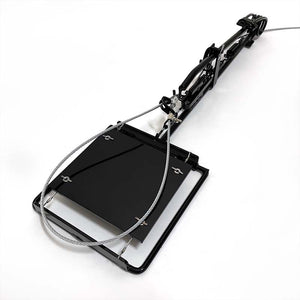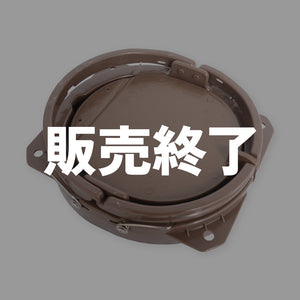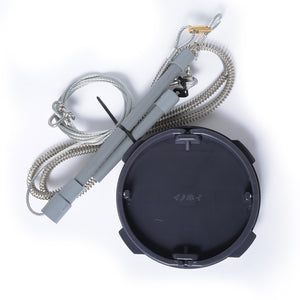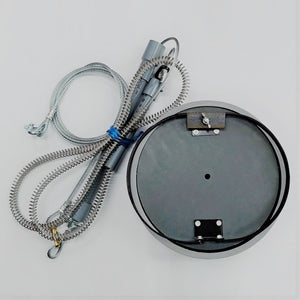Traps are often used to capture wild animals such as wild boars and deer. There are various types of traps in the world, but the most typical one is the 'Kukuri Trap' , which traps the animal's legs by tying them with wire.
However, since you have to read the movements of the beasts before setting up the tying traps, the hurdles may be high for beginners, and there may be many things you don't understand.
We manufacture and sell thousands of tying traps per year, and we have received various feedback from many users. Based on that experience, we have been disseminating a lot of information so far, so this time we would like to introduce a digest of the information we have disseminated in the past. If you want to know more about Kukuri Trap, please refer to it.
In the first place, what is a tying trap?
A kukuri trap is a type of trap used to catch wild animals such as wild boars and deer. Specifically, a trap is set in advance in the animal path where the prey is likely to pass, and when the prey steps on the trap with its foot, the trap is activated by the force of the spring. It is a mechanism that a wire binds the legs of the beast and captures it. There is also a method of tying the torso and neck of the prey, called ``dorukukuri'', but in general, ``ashikukuri'', which ties the legs, is often used.
Features of Kukuri Trap
Compared to other traps, kukuri traps are characterized by their small size and light weight. Some box traps, in which bait is placed in a cage, weigh more than 100 kg, requiring a lot of effort to set up and transport. Compared to other types of traps, it is easy to install and remove anywhere.
You can set a large number of them at once, so you can capture them efficiently. Also, compared to box traps, which are clearly man-made, kukuri traps are set so that beasts do not notice them, so they are an effective means of capturing even wary beasts.
Some people say that even beginners can catch it immediately after setting it, while others say that it is quite difficult. *As an aside, I think that many people who are good at fishing tend to be good at tying traps.
Our shop's tying trap is a flip-up type tying trap that sets a footboard + spring as a set with the motto of "easily installed, cheap and good catch".
The principle of operation is
( 1 ) Bury a PVC pipe in the ground that will serve as a pedestal in the path of the animal.
( 2 ) Wrap the wire loop (snare) that wraps the animal's legs around the rail attached to the footboard (the part that the animal steps on).
( 3 ) Push the push spring in and fix it in a compressed state.
④ Place the footboard on the pedestal of ① and cover it with soil and leaves thinly.
⑤ When the animal steps on the footboard, the snare jumps up with the force of the spring, and the snare tightens to catch the animal's foot.
Please refer to the video below for an easy-to-understand video of how the Kukuri Trap works.
Here's another article
As for 300 capture cases a year! Introduction of Fare Asahi style tying trap>>Introducing components and parts
Let's take a look at the parts that make up a tying trap. Kukuri Trap is mainly composed of the following parts.
Components of a tying trap
First of all, "wire" is an indispensable part for tying traps, such as the role of tying the prey's legs and fixing it to the standing tree that serves as a support. If a kink (a state in which the wire is bent and does not return to its original shape) occurs, the strength of the wire will be significantly reduced, so it will be the part that needs to be replaced most frequently.
Please read the article below for more information on wires.
Here's another article
I want to know more about the wire of the tying trap>>A "sleeve" is a part used to bundle wires. Pass the wire through the sleeve twice and fix it by crimping it with a special tool . It is a necessary part when processing wire ends or making loops.
The "spring" part is the power for the tying trap. The performance of this spring greatly affects the operation of the trap.
Most people use a compression spring, and the trap snare is tightened using the force of the spring that is compressed. Conversely, with a pull spring, the wire snare is tightened by the force of the spring contracting. The torsion spring tightens the snare by opening the spring from the folded state.
The stronger the spring, the faster the trap will operate, but you need to use a lot of force to set it, and there is a risk of injury due to an accidental discharge, so it is important to use a spring that suits you.
*The torsion spring is the most powerful, but there have been cases of blindness caused by the accidentally opened spring hitting the face when setting a trap, so we use a compression spring structure.
" Yorimoshi" is a part also known as "Sarukan". If a beast caught in a tying trap goes berserk, the wire may become twisted and kinked, making it easier to cut. The untwisting is a part to prevent this, and is required by law to be installed.
"Kukuri metal fittings" are parts that keep the prey's legs from coming out of the tied wire, and the more the beast pulls to escape, the tighter it is. Kukuri metal fittings are a part that is divided into those who use it and those who do not use it, but we recommend using it in consideration of the ease of operation and set-up.
The "tightening prevention metal fitting" is a part that prevents the animal's legs from getting bloody or being torn off due to excessive tightening of the wire, and it plays the role of a stopper to prevent the snare from shrinking too much. . They are also required by law to be worn.
In addition to this, the parts that make up the trap include a convenient "shackle" for connecting wires to the support, and a "PVC pipe" to protect the operation of the spring.
Here's another article
Constituent parts and parts of tying traps>>How to increase the results with the tying trap?
In fact, there are many cases in which even if measures are taken to prevent wildlife damage using tying traps, results are not readily achieved. Here are some basic points to improve the results of tying traps.
Don't miss the sign of the beast
Beasts are very alert and sensitive to human smells, signs, and sounds. So when choosing a place to set up a trap, don't miss the beast's signature.
Specifically, pay attention to footprints, droppings, and food marks. For example, we can determine the size and sex of a beast from the size of footprints and the amount of droppings. If the droppings or bite marks are new, it's a sign that the beast is frequently infesting the area.
Footprints are the most important thing when setting up a tying trap, so it is a good idea to read not only the size but also the walking direction and stride length, and imagine how the target will actually move.
Also, in the case of wild boars, mud will stick to the surrounding vegetation if the mud bath is close. There are many roads that are frequented near Nutaba, so be sure to keep an eye out for such signs. Avoid placing traps immediately after mowing or in areas where people frequently pass, as beasts are wary and will not approach.
In addition, the catch rate tends to decrease immediately after mowing the grass or in areas where people frequently pass because the beasts are wary and do not approach.
Here's another article
Tips for increasing the results of tying traps>>Don't forget to look around and check
After setting up a tying trap, don't forget to go around and check it regularly. We recommend checking daily if possible. By looking around, you can notice beast signs and make new discoveries. In addition, captured beasts also desperately try to escape, so sometimes they tear off their legs and escape. By conducting patrols without fail, it is possible to respond quickly.
A license or permit is required to set up a trap.
A trapping license is required to use traps such as box traps and enclosure traps, including tying traps. In addition, the types of animals that can be captured and the hunting period are also determined in detail. Each municipality has different approaches, so first contact the local government department in the area where you plan to catch them.
Here's another article
The first step to catching pests - Necessary licenses and permits>>


 箱罠
箱罠
 くくり罠
くくり罠
 パーツ類
パーツ類
 電気柵
電気柵
 自作キット
自作キット
 防獣グッズ
防獣グッズ
 監視カメラ
監視カメラ


![[Explanation step-by-step] From catching wild boars by tying traps to catching them alive](http://inohoi.jp/cdn/shop/articles/inoshishi_1_-min_520x500_520x500_520x500_520x500_4420c9dd-b9d3-4280-ac59-33eb8c1d1501.jpg?v=1759380216&width=750)
![[Must-see for beginners! ] Understand the prohibitions of tying traps and avoid violations](http://inohoi.jp/cdn/shop/articles/2021-09-14T184734.623_520x500_3bf471f0-297d-44cf-94a9-c2cbbadf24a6.jpg?v=1738827745&width=750)






 box trap
box trap
 tying trap
tying trap
 enclosure trap
enclosure trap
 Prevention and avoidance goods
Prevention and avoidance goods
 electric fence
electric fence
 trap surveillance camera
trap surveillance camera
 transportation goods
transportation goods
 Trap detection sensor
Trap detection sensor
 hunting supplies
hunting supplies
 hunting books
hunting books
 Anti-bird goods
Anti-bird goods
 Agricultural materials/machinery
Agricultural materials/machinery
 boar
boar
 deer
deer
 Kyon
Kyon
 monkey
monkey
 raccoon
raccoon
 Badger
Badger
 palm civet
palm civet
 raccoon dog
raccoon dog
 nutria
nutria
 mouse or rat
mouse or rat
 Mole
Mole
 bear
bear
 pigeon
pigeon
 Crow
Crow







